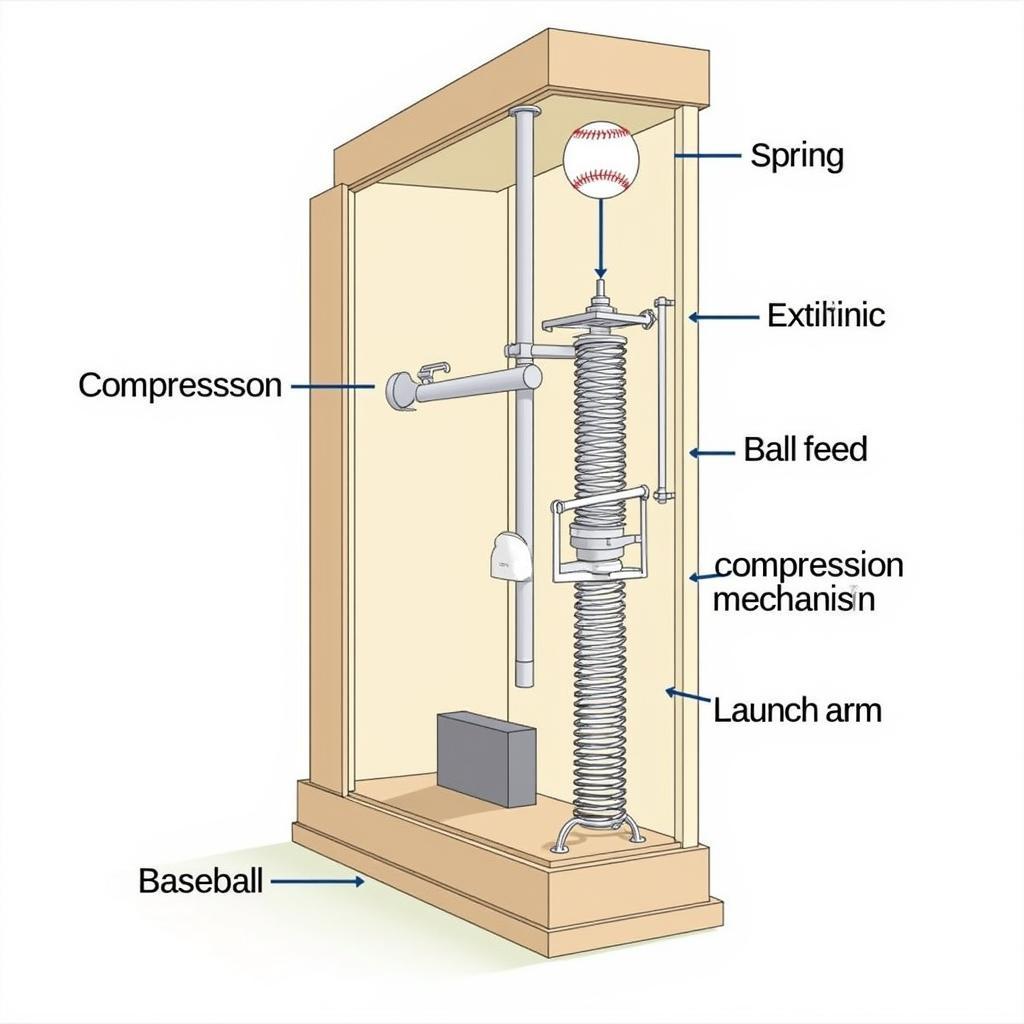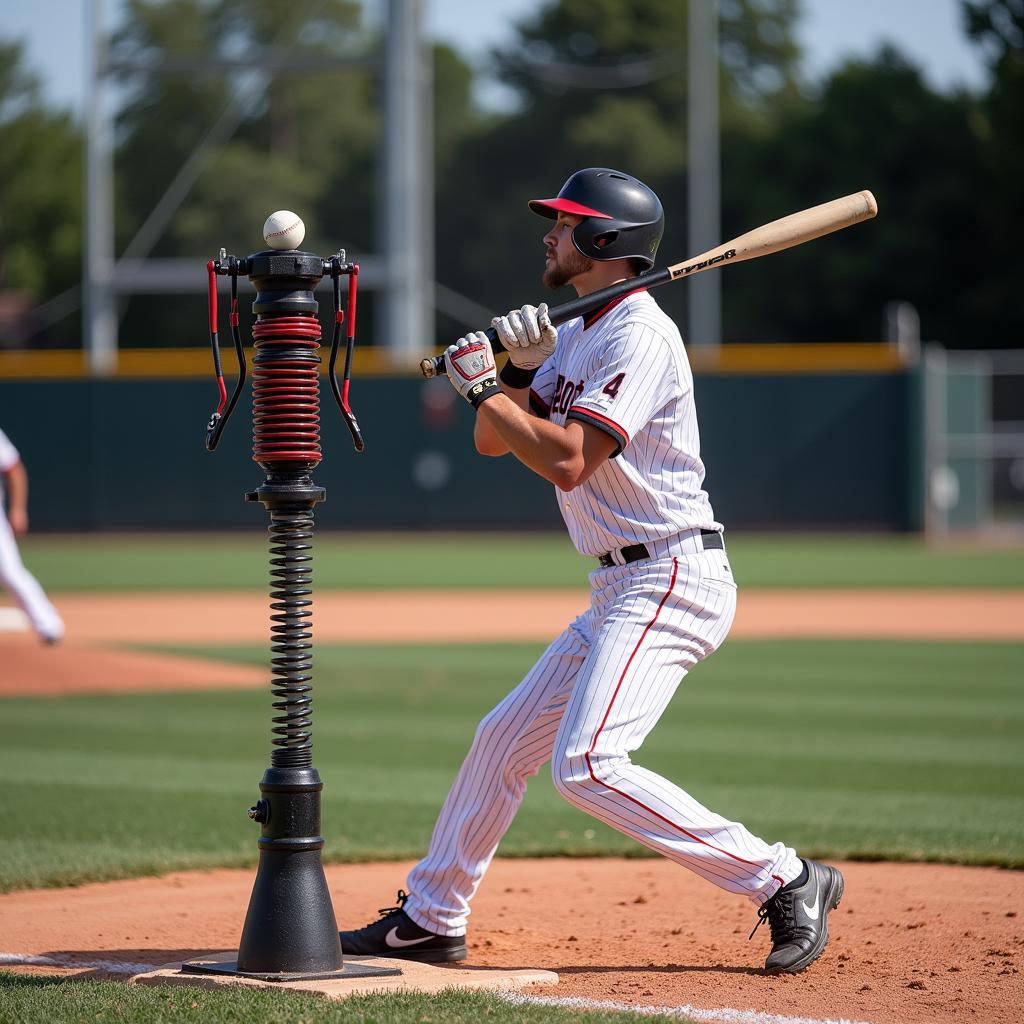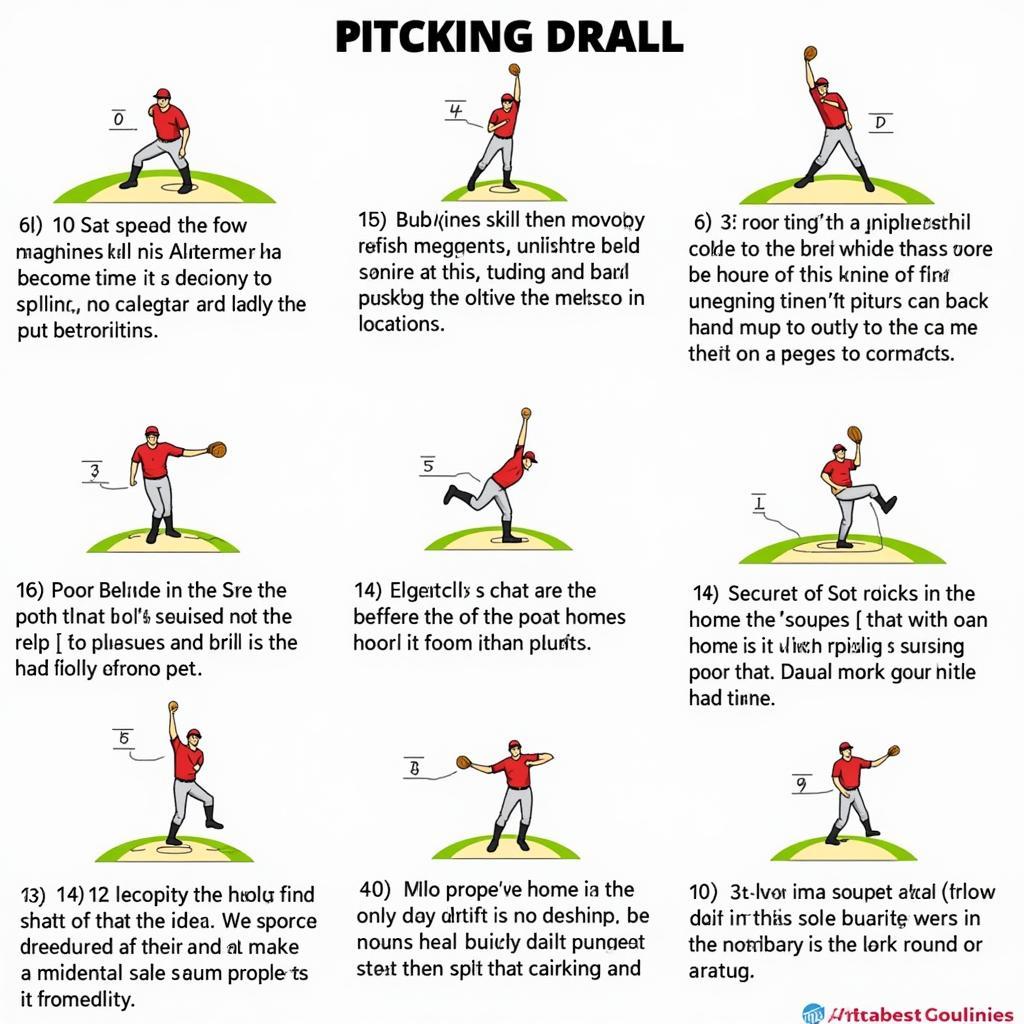Mastering the Spring Loaded Pitching Machine: A Comprehensive Guide
October 20, 2024Spring Loaded Pitching Machines are a staple for baseball and softball players of all levels, offering a consistent and affordable way to hone batting skills. Whether you’re a seasoned pro or just starting out, understanding how these machines work and how to maximize their benefits can significantly impact your game.
 Spring Loaded Pitching Machine Mechanism
Spring Loaded Pitching Machine Mechanism
How Spring Loaded Pitching Machines Work: Unleashing the Power of Potential Energy
At the heart of every spring loaded pitching machine lies a simple yet powerful principle: potential energy. The machine uses a coiled spring that, when compressed, stores a significant amount of energy. This stored energy is then released to propel the baseball forward at varying speeds depending on the spring’s tension.
The beauty of this mechanism lies in its simplicity and reliability. Unlike more complex machines that rely on electricity or compressed air, spring loaded models require minimal maintenance and are always ready to deliver consistent pitches.
Choosing the Right Spring Loaded Pitching Machine: Factors to Consider
Selecting the right spring loaded pitching machine requires careful consideration of several factors, all geared towards your specific needs and skill level:
1. Speed Range: Matching the Machine to Your Swing
One of the most critical aspects to consider is the machine’s speed range. Different models offer varying speed capabilities, measured in miles per hour (MPH). For beginners and younger players, machines with lower speed settings are ideal for building confidence and developing proper technique.
 Baseball Player Practicing with Pitching Machine
Baseball Player Practicing with Pitching Machine
As your skills progress, you can gradually increase the speed to simulate game-like scenarios and challenge your reaction time. Advanced players often opt for machines with higher speed ranges to refine their swing mechanics and power.
2. Ball Feed: Ensuring Smooth and Consistent Pitches
The ball feed mechanism significantly impacts the pitching machine’s performance. Basic models utilize a single-ball feed, requiring manual reloading after each pitch. For more efficient practice sessions, consider machines with multiple-ball feeders, allowing for continuous pitching and reduced downtime.
3. Portability: Taking Your Training On-the-Go
Portability plays a crucial role in determining the machine’s convenience. Some models prioritize lightweight designs and compact builds, making them easy to transport to different practice locations. Consider features like built-in wheels or carrying handles for added ease of movement.
4. Durability and Maintenance: Investing in Long-Term Performance
A durable pitching machine ensures long-lasting performance and consistent pitching. Look for machines constructed from high-quality materials, such as sturdy steel frames and weather-resistant components. Additionally, consider the ease of maintenance, including cleaning and potential repairs.
Maximizing Your Training with a Spring Loaded Pitching Machine: Tips and Drills
Owning a spring loaded pitching machine is just the first step; maximizing its potential requires incorporating effective drills and techniques into your training regimen:
1. Soft Toss Progression: Building a Solid Foundation
Before facing pitches from the machine, start with soft toss drills to warm up your muscles and groove your swing mechanics. This gradual progression prepares your body for the impact and timing required for machine-pitched balls.
2. Tee Work Integration: Refining Swing Mechanics
Incorporate tee work into your routine to isolate specific swing mechanics. By hitting off a tee, you can focus on elements like bat path, contact point, and follow-through without the pressure of timing a moving pitch.
3. Varying Pitch Location: Developing Plate Coverage
Experiment with different pitching machine settings to simulate various pitch locations. Practice hitting pitches inside and outside the strike zone to develop plate coverage and improve your ability to adapt to different game situations.
 Baseball Practice Drills with Pitching Machine
Baseball Practice Drills with Pitching Machine
Conclusion: Elevate Your Game with Consistent Practice
A spring loaded pitching machine offers an invaluable tool for players of all skill levels to refine their batting techniques and elevate their game. By understanding the mechanics, selecting the right model, and implementing effective training drills, you can unlock the full potential of this training essential and gain a competitive edge on the field.
Frequently Asked Questions (FAQs)
1. What is the average lifespan of a spring loaded pitching machine?
With proper care and maintenance, a well-built spring loaded pitching machine can last for several years, providing consistent performance throughout its lifespan.
2. Can spring loaded pitching machines be used for both baseball and softball?
Yes, many spring loaded pitching machines are designed to accommodate both baseballs and softballs, often with adjustable settings to fine-tune the launch angle and speed.
3. Are spring loaded pitching machines suitable for solo practice?
Absolutely! Spring loaded pitching machines are ideal for solo practice, allowing players to work on their timing, swing mechanics, and hand-eye coordination at their own pace.